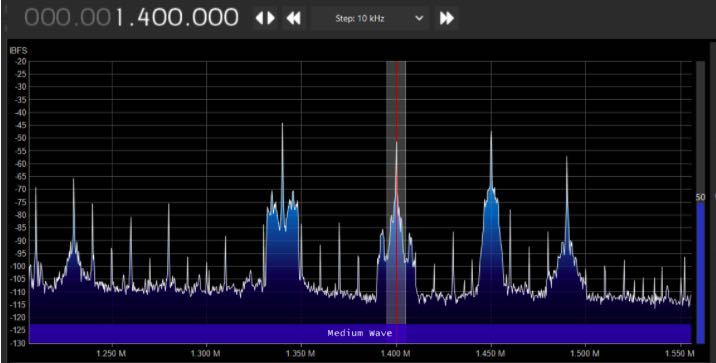 (Source: IEEE Spectrum via Dennis Dura)
(Source: IEEE Spectrum via Dennis Dura)
A Four-Year Program to Tackle a Fundamental Antenna Challenge — IARPA hopes to break past an 80-year-old limit on making small radio antennas more effective
For 80 years, a class of antenna called electrically small antennas has been stymied by a seemingly insurmountable barrier. These antennas, which can receive signals with wavelengths that are much longer than the antennas themselves, are seemingly stuck with designs in which there is a trade-off between high bandwidth and efficiency.
Now, a new program by the U.S. Intelligence Advanced Research Projects Activity (IARPA) agency seeks ways to finally circumvent or overcome these historical limitations for electrically small antennas. Over the next four years, the research teams participating in the Effective Quantitative Antenna Limits for Performance (EQuAL-P) program will work through three phases of progressively more ambitious benchmarks in order to prove their ideas can work.
The simplest form of antenna is a dipole antenna, which is essentially just two pieces of wire placed end to end with a feed point in the middle. The length of this antenna is typically half the wavelength of the signal that is being received or transmitted, so a shortwave radio dipole working in the 20-meter band would be 10 meters long. An “electrically small” antenna is one that is significantly shorter than the wavelength of the signals it is designed for. These antennas typically take the form of small loops or patches.
The benefit of electrically small antennas is clear—as the name implies, they confer an advantage when space is at a premium. Satellites, for example, can use them to reduce mass and free up more space for other components.
But the trade-off with electrically small antennas is that as they get shorter, their bandwidth and radiation efficiency also shrink, eventually hitting something named the Chu-Harrington limit. This has meant that although such antennas have been in use for decades, they remain difficult to design and limited in their applicability. Historically, any attempts to widen the usable bandwidth have decreased these antennas’ radiation efficiency even more, and vice versa. This is the problem the EQuAL-P program is aimed at.
“Because it’s an 80-year problem, we want to give them a little more time to come up with solutions,” says Paul Kolb, the program manager for EQuAL-P. The eight teams participating will work through three increasingly ambitious phases during the next four years to prove their ideas can pass muster.
At the end of 18 months, Kolb says, he hopes to see that the teams have made meaningful progress toward the ultimate goal of a 10-decibel gain in antenna performance in the HF and ultrahigh frequency (UHF) bands. But because of the difficulty of the challenge, teams won’t be required to produce a working demonstration of their technology at that point. [Continue reading full article at the IEEE spectrum…]

Modern machine learning should turn out some interesting designs. NASA was doing iterative antenna design back in 2006.
https://www.nasa.gov/centers/ames/research/exploringtheuniverse/borg.html
the only effective antennas smaller than an eighth of a wavelength that i know of would be a magnetic loop, i have one and it works quite well, now for a dipole the only solution i can think of has already been invented and that is using coils of wire so it is keeping the antenna electrically the same wavelength, or use a cheaterbox (antenna tuner) but it wont improve performance of the antenna itself
It seems as though we are looking for antenna designs that cheat the laws of physics! Still, I look forward to any research that improves my ability to receive distant stations on any band of interest.
It is also worth noting that DARPA has another program, running for several years now, developing antennaless, portable, LF communications. Some contractors have already demonstrated these devices, which use mechanical or magnetoelastic emitters and not conventional RF transmission. In FY 2023 this program plans to spend more than $17 million.
I never knew there was an INTELLIGENCE ARPA, separate from the DEFENSE ARPA we know (that the ARPAnet later Internet was named after). I can’t help but wonder if this will find its way to the rest of us considering who’s paying for developement.
It isn’t unclear if the antennas should be TX/RX or RX only ones, at any rate, the 3D fractal antennas come to mind, either single or configured as an electronically steerable array
3D fractal antennas are probably the way to get a wider frequency range which usually causes a drop in gain when compared to a narrow band Yagi-Uda antenna in the same frequency range.
A log periodic antenna is an antenna which can be designed for any bandwidth. The limitations on the low frequency end is the physical size and at the high frequency end the small size spacing of the feed to each element.
https://www.researchgate.net/publication/257909757_Performance_analysis_of_first_iteration_koch_curve_fractal_log_periodic_antenna_of_varying_flare_angles is of interest
The shark fin antenna used by vehicle manufacturers are an antenna which is well short of half wavelength!